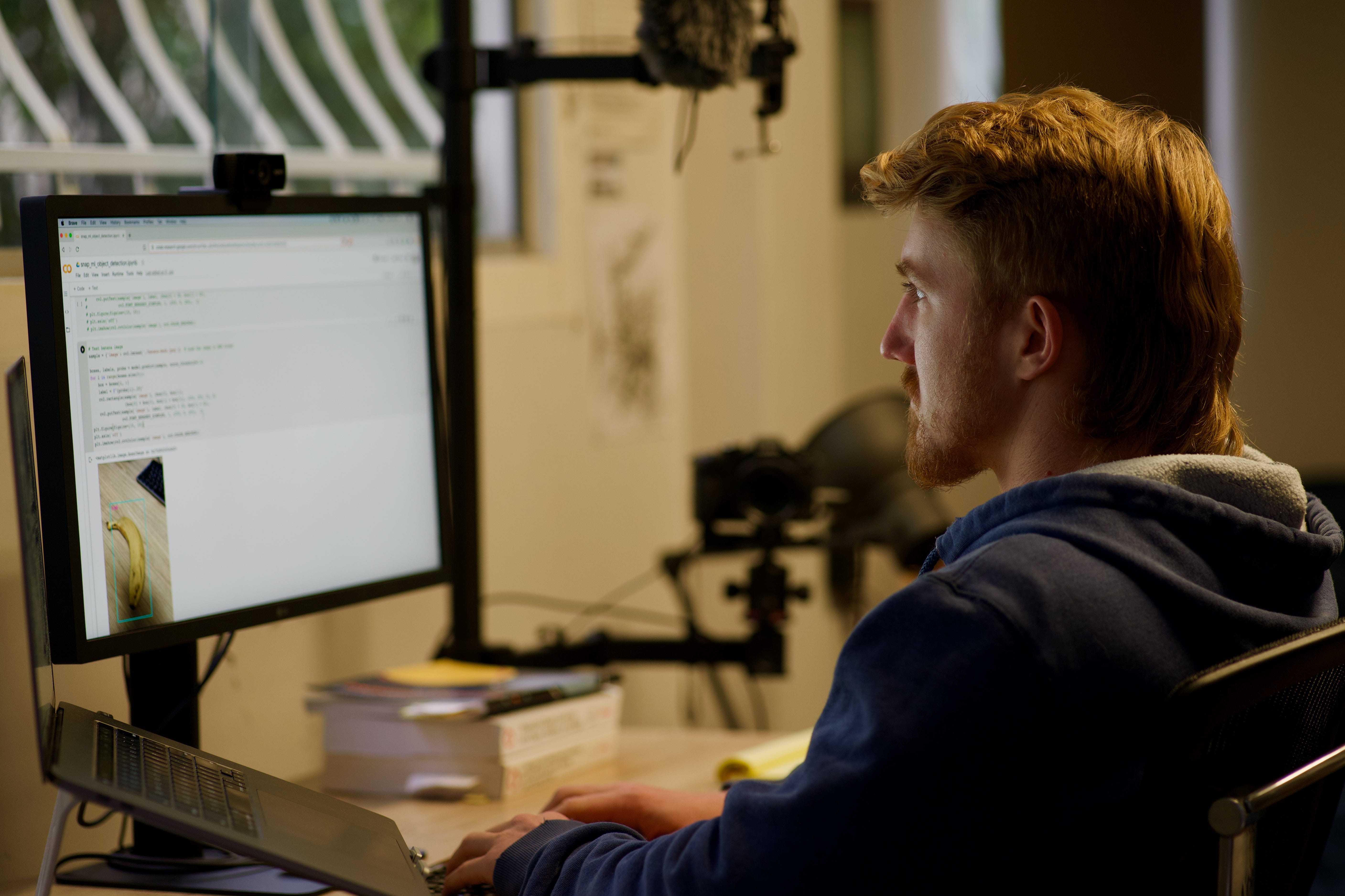I trained my first model in 2017 on my friend’s lounge room floor.

2020 requirements for state of the art machine learning: mullet. That’s it.
The other day, the absolute and complete living legend, Head of Data Science and creator of incredible data science-related , Ken Jee reached out to me asking if I wanted to collaborate on a video (or two).
I said sure.
We decided question and answer, back and forth type videos would be best.
So he sent me a few questions he’d probably ask me and to prepare, I wrote out answers to each of them.
And now I’m copying them here.
How did you get interested in data science/machine learning, to begin with?
In 2017, my friends and I were building a web application (very primitive) to link together local gyms in our area. We had the problem of not being able to train with each other whenever we wanted. So we had the idea of making the Airbnb of fitness facilities, somewhere you could go and book time/space and workout with who you wanted.
After a while, we realised many gym’s business models depend on people not showing up. So us trying to add more people through our fancy little app (called AnyGym) wasn’t really going to fly.
Plus, the spark kind of fizzled out after a while because everyone had their own things going on. The project never really left more than side project stage for any of us.
At the same time, I left my job at Apple Retail (I was one of the Geniuses, the people who help you with your computer), to take learn to code again (my 3rd-4th attempt).
Due to my lack of skill and short attention span, web development felt a bit too tedious to me. And of course, 2017 was peak machine learning hype so in my searches I stumbled across all kinds of cool things. Especially Udacity’s brand new Deep Learning Nanodegree and a cheerful character called Siraj Raval. The pretty colours, the charismatic personality, it all got me. So I signed up 2–3 weeks out from the start without knowing a gram of Python.
I thought, “Woah, the computer learns for you?”… I can get around that.
Thinking I was way over my head (after reading a list of prerequisites I didn’t have), I emailed support asking what the refund policy was. Luckily, I didn’t follow through with the refund and decided to keep learning.
What did you study in college? (I think you said nutrition right?)
I started with biomedical science but spent my first 2 years chasing girls, sitting around, working out, going to the waterfalls nearby instead of going to class.
Eventually, the Dean of Science sent me an email saying to come and visit.
He basically said, “Why should we keep you here?” (but in much nicer terms).
I used the good excuse of my Dad being sick (which he was) but the real reason was I was lazy and trying to study something which didn’t really spark my curiosity.
Instead of reading lecture notes, I’d find myself staying up late at night watching YouTube videos of bodybuilders and world-class athletes eating for performance.
The Dean caught wind of this and said, “Why don’t you switch to nutrition?”.
And that blew my mind.
Because I was like, “You can choose what to study?”.
You see, this is how naive I was. I chose biomedical science because I thought saying “I’m studying to be a doctor” sounded cool.
So 2-years into college, I switched to nutrition and food science. Some of my biomedical subjects counted but not all of them. So a 3-year undergraduate degree turned into 5-years.
But I don’t really care about the degree itself, the knowledge is more important to me.
Even now, people ask, what are you doing with your nutrition degree? And I tell them with a smirk, “I’m shredded.”
I left college with something even more valuable than a degree.
I left with the idea that if there was something out there which sparked my curiosity, I could follow it.
What concepts did you start learning machine learning with? (small projects or learning theory)
I started with deep learning (the Deep Learning Nanodegree was the first course I took). I remember being on my friend’s floor training my first convolutional neural network on CIFAR10 and showing him the outputs.
I showed him the model recognising a photo of a plane and he asked how you’d do that and I said I didn’t, the computer learned it for itself. You should’ve seen his face.
Udacity and Coursera courses were a mix of theory and small projects. Although the projects were quite handheld (an instructor sets out the steps for you), I think that’s important when you’re starting out. If you try things too far out of your reach, you’ll lose motivation and stop.
It’s a fine line between testing your ability on something you’re unsure of and not going far enough. If you don’t test yourself, you end up going back over the material you’ve already covered.
However, this isn’t always a bad thing, because learning isn’t linear. I learn things more twice as much when I go over them for 2nd time, more than 3 times as much for the 3rd time and so on.
#getting-started #towards-data-science #data-science #learning-to-code #machine-learning
